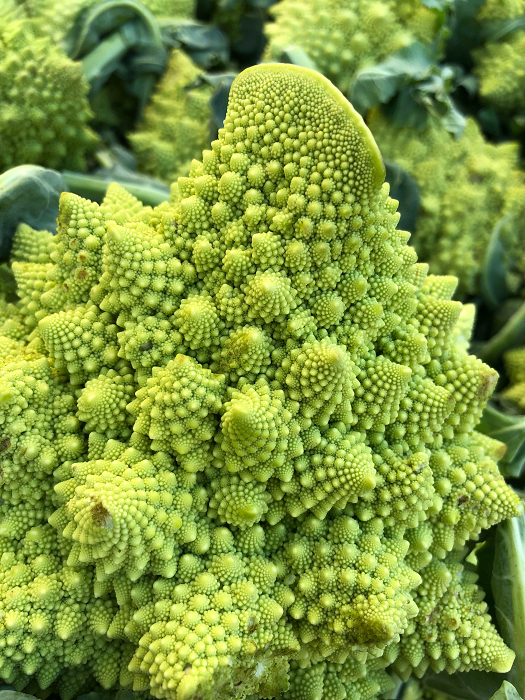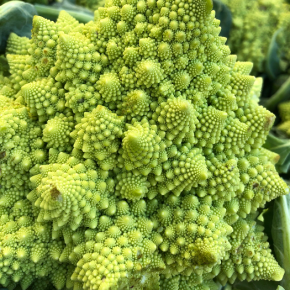
Where does the shape of the Romanesco cauliflower come from?
The mystery of the formation of one of the most peculiar plant forms – the Romanesco cauliflower – has been solved by a team of scientists from the CNRS1 and Inria in an article published on the 9 July in Science. Thanks to work combining mathematical modelling and plant biology, the scientists were able to determine that cauliflowers, and Romanescos in particular, are in fact buds that are designed to become flowers but which never reach their goal. Instead, they develop into stems, which in turn continue trying to produce flowers. The cauliflower is born from this chain reaction, resulting in a succession of stems upon stems. This study shows that the brief incursion of buds into a flowering state profoundly affects their functioning and allows them, unlike normal stems, to grow without leaves and to multiply almost infinitely. The atypical shape of the Romanesco is explained by the fact that its stems produce buds more and more rapidly (whereas the production rate is constant in other cauliflowers). This acceleration gives each floret a pyramidal appearance, making the fractal aspect of the structure clear. The study highlights how the selection of mutations in plants during the process of domestication has changed their shape, sometimes drastically, into the fruits and vegetables on our shelves.

© Nathanael Prunet
- 1Scientists from the laboratoire de physiologie cellulaire et végétale (CNRS/CEA/INRAE/Université Grenoble Alpes) and the laboratoire reproduction et développement des plantes (CNRS/ENS Lyon/INRAE) participated. Several foreign universities were also involved in the study: the Polytechnic University of Valencia, Spain; the University of Milan, Italy; the University of California, USA; the University of Nottingham, UK; and the National Autonomous University of Mexico
Cauliflower fractal forms arise from perturbations of floral gene networks. Eugenio Azpeitia, Gabrielle Tichtinsky, Marie Le Masson, Antonio Serrano-Mislata, Jérémy Lucas, Veronica Gregis, Carlos Gimenez, Nathanaël Prunet, Etienne Farcot, Martin M.Kater, Desmond Bradley, Francisco Madueño, Christophe Godin and Francois Parcy. Science, 9 July 2021. DOI : 10.1126/science.abg5999


